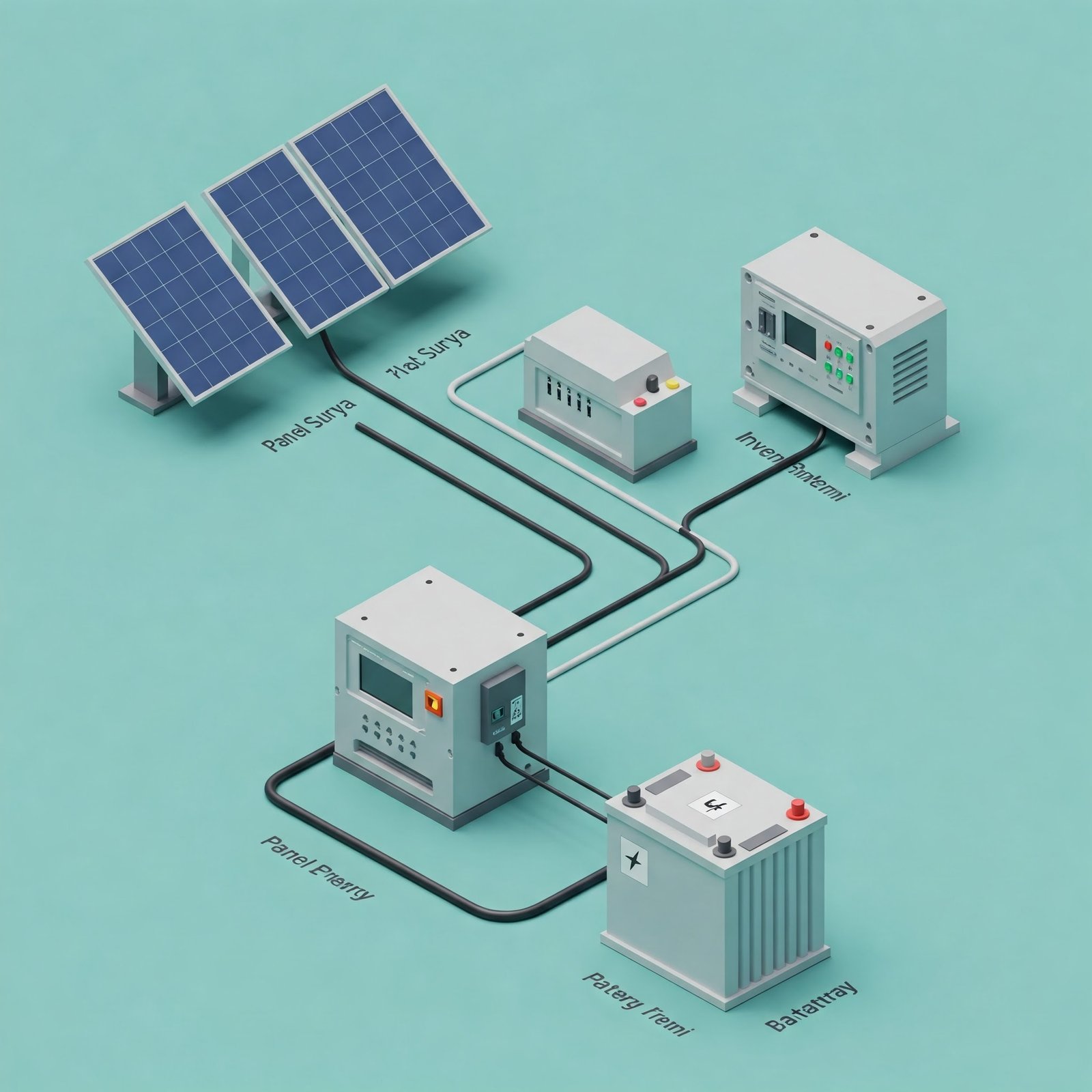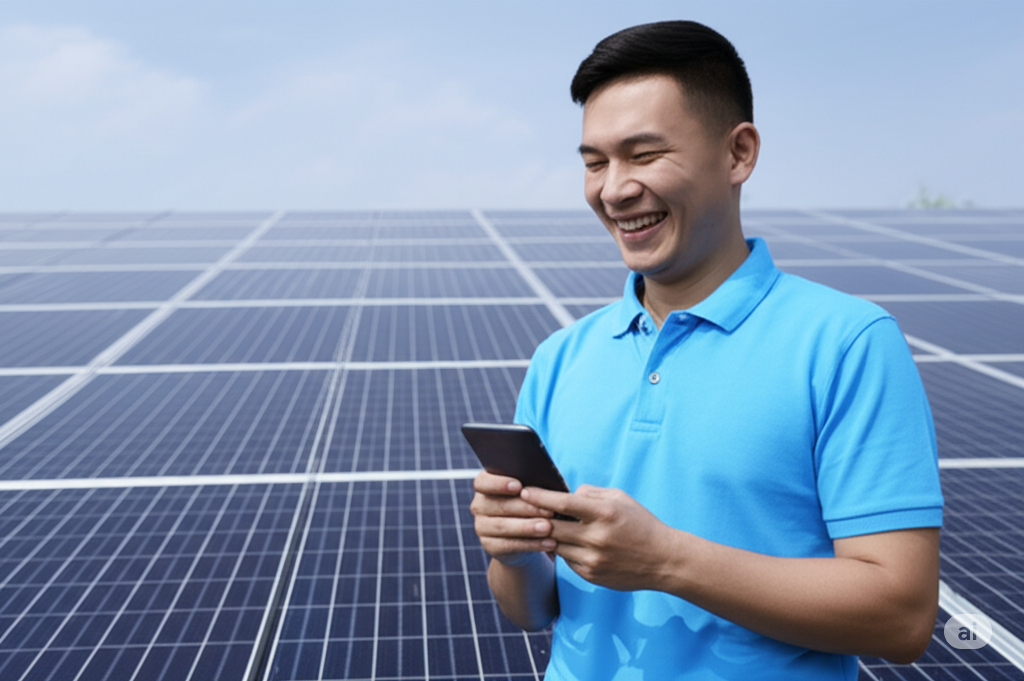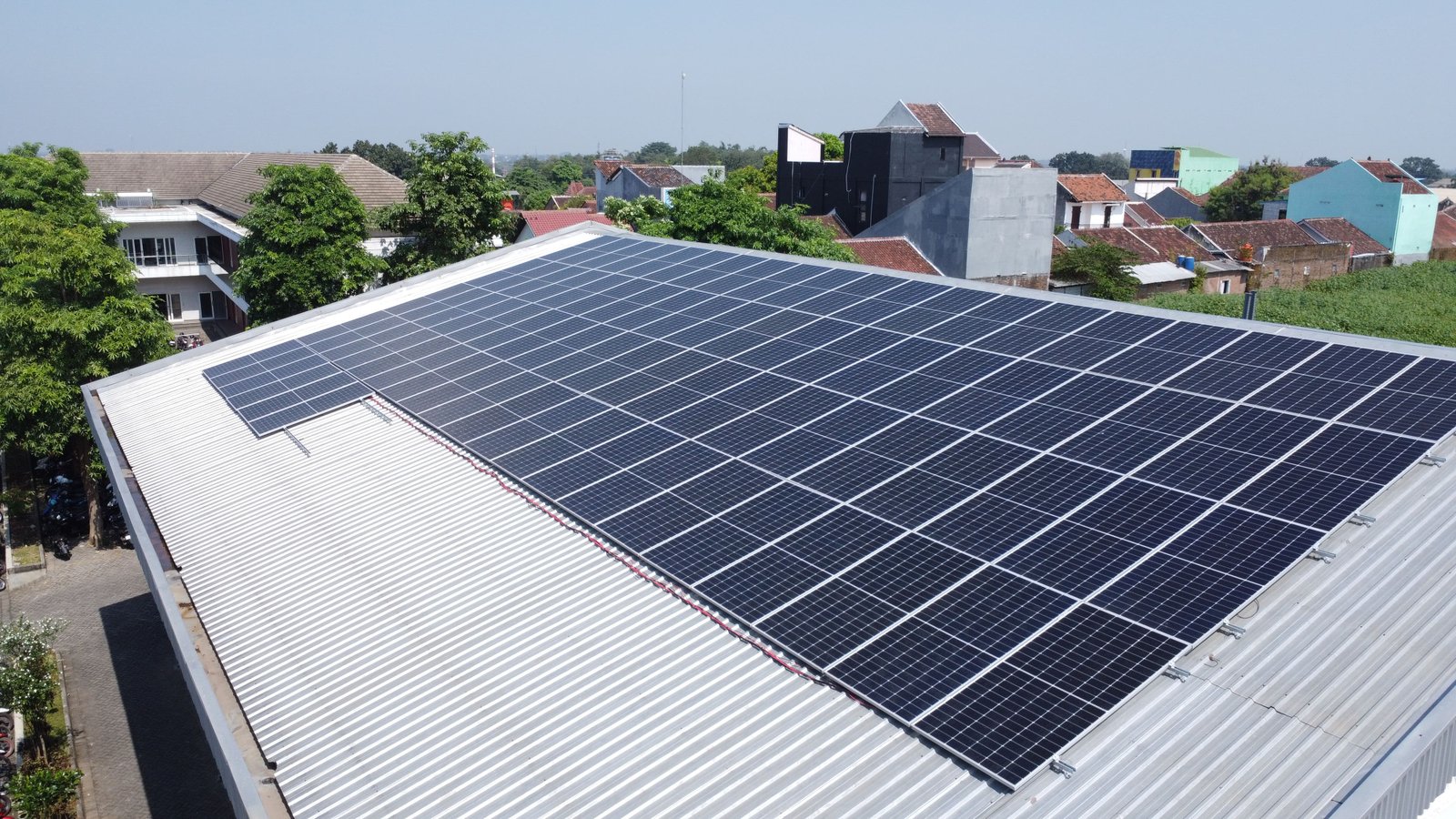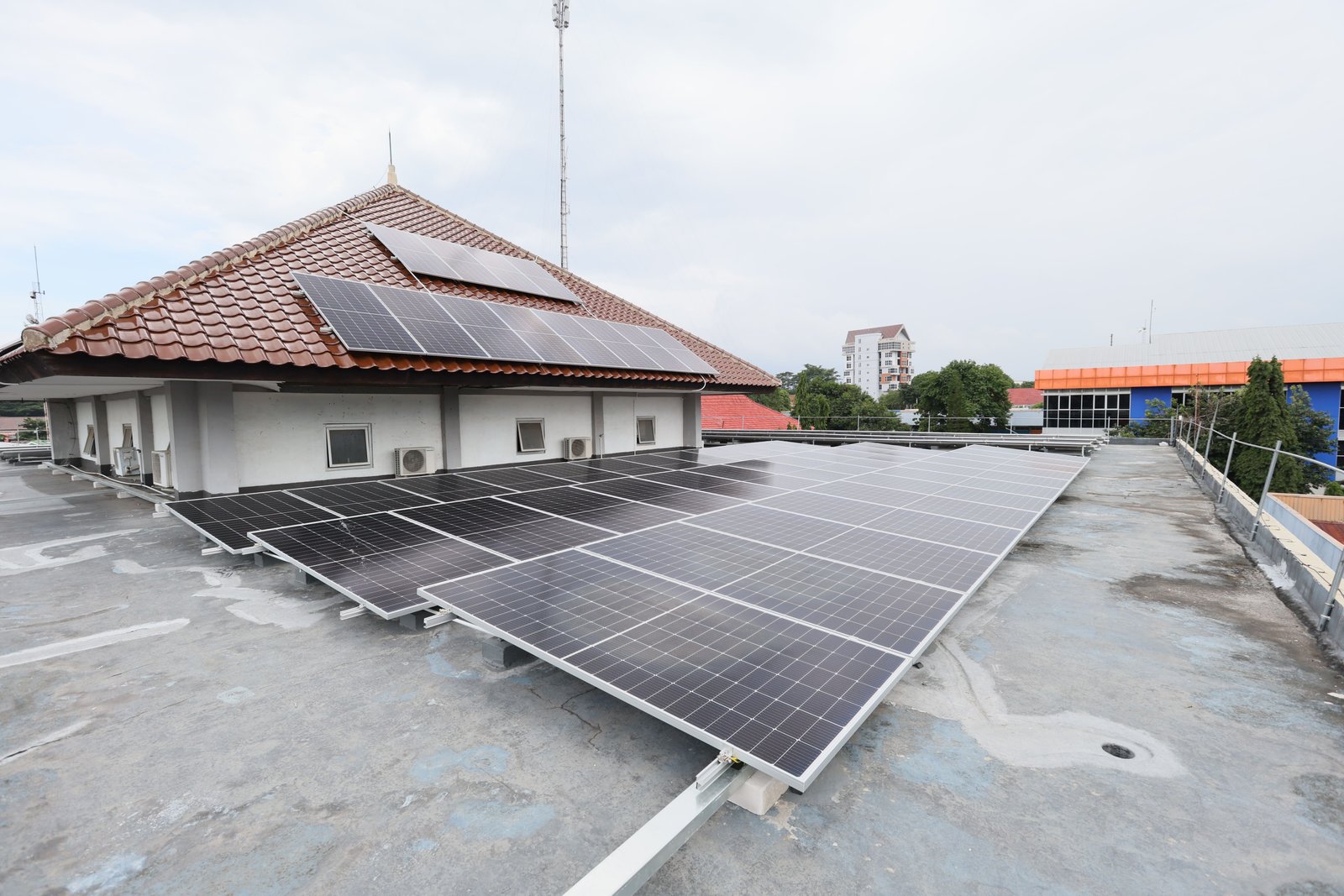
An On-Grid Solar Power System is a solar electricity generation system that is connected directly to the main electrical grid (e.g., PLN).
An on-grid solar power system is a solar electricity generation system that connects directly to the main electrical grid (e.g., PLN). This system is designed to work in sync with the grid, feeding electricity generated by the solar panels to your home or building while also being able to draw power from the grid if the solar energy production isn't enough.
Here are the main components of an on-grid solar power system:
Solar panels are the primary components that convert sunlight into electrical energy.
They are made of photovoltaic cells that produce direct current (DC) electricity when exposed to sunlight.
An inverter is a device that converts the DC electricity from the solar panels into alternating current (AC), which is the standard electricity used by household appliances and the electrical grid.
An on-grid inverter is specifically designed to work in harmony with the grid, allowing it to feed excess solar energy to the grid and draw energy from the grid when needed.
A monitoring system keeps track of the solar power system's performance, such as energy production, energy consumption, and operational status.
This data helps users understand the system's performance and identify potential issues.
A combiner box joins the output from several solar panels into a single output.
It is also equipped with safety devices like fuses and circuit breakers to protect the system from electrical disturbances.
An electric meter measures the electricity consumed from the grid and the electricity fed into the grid (if there is a net metering mechanism).
With a net metering system, any excess solar energy generated can be fed into the grid and "counted" as a credit that can be used to reduce your electricity bill.
Reduced Electricity Bills: An on-grid system can significantly lower your electricity bills by using self-generated solar energy.
Environmentally Friendly: Solar energy is a clean, renewable energy source that produces no greenhouse gas emissions.
Minimal Maintenance: On-grid systems generally require minimal maintenance.
Return on Investment: In the long term, an on-grid system can provide an attractive return on investment through electricity cost savings.
On-grid solar power systems are perfect for:
Households: To reduce household electricity costs.
Commercial Buildings: To save on operational costs and improve a company's image.
Industries: To provide an additional energy source and reduce reliance on the electrical grid.
With an on-grid solar power system, you can use solar energy to meet your electricity needs, cut costs, and contribute to a cleaner environment.


